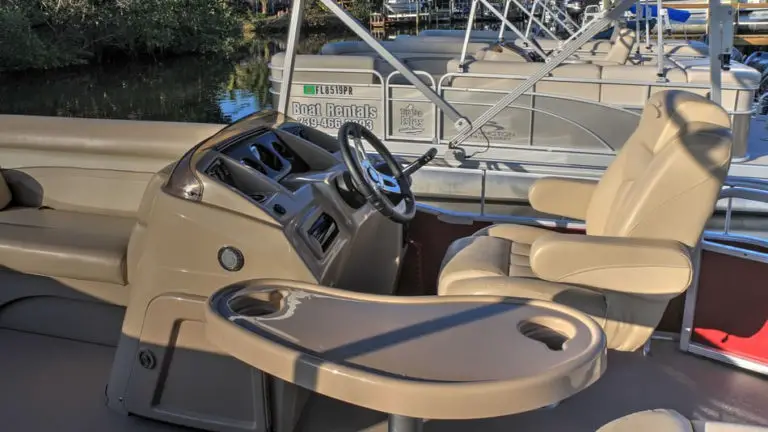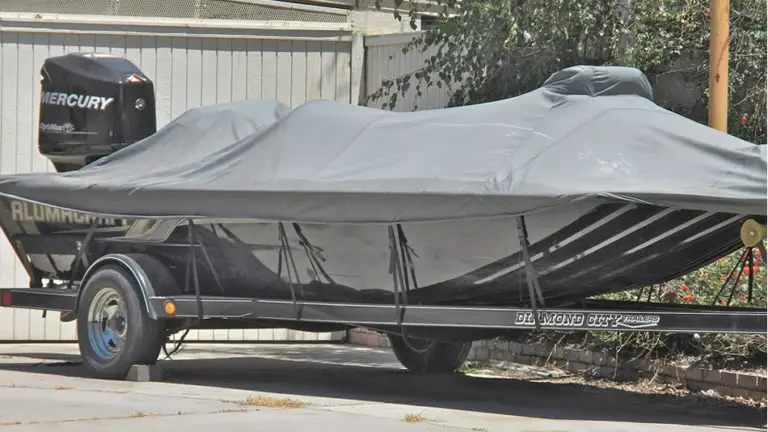Where To Mount The Boat Compass
The boat compass is imperative for proper navigation, but if you want to read it properly, you have to know where to put it. A lot of people are confused, and they end up placing the boat compass in the wrong place.
The compass should be mounted on the ship in front of the helmsman. The most important thing that you want to keep in mind when mounting the compass is to make sure that it is away from electrical wiring, iron components or anything magnetic.
These types of things will cause the compass to give off a false reading, and possibly cause you to head further away from land, rather than towards it. As long as you keep the boat compass away from electrical wiring or any magnet, you will be fine.
What Is a Ship’s Compass Called?

Using a magnetic compass is crucial for navigation, and it will make it easier for you to find the destination. However, the magnetic compass might not have the best accuracy all the time if you keep it close to electrical wires and magnets. That’s why you usually place that compass in a dedicated location, and that’s named a binnacle.
The binnacle is a container where you place the ship’s compass and all of its components. Initially, the binnacle was mainly made out of wood to help maintain a more accurate reading for the compass. At the top of the binnacle sits the compass bowl and that’s where you can find the corrector magnets.
The marine binnacle has been around for a very long time, and it continues to have a major influence on boaters worldwide.
What Is a Magnetic Compass Used For In a Boat?

It seems like a very good idea to have a magnetic compass for your boat. But the reality is that a lot of people don’t know why you would go with a magnetic compass in the first place. It all comes down to a variety of factors here as you might imagine.
The main idea is that you want to use the magnetic compass to direct your boat towards the desired destination. You will be able to navigate and reach the destination even if you have reduced visibility. That makes it very efficient especially during a storm when you can’t see anything, and you can only rely on your equipment.
But you have to keep in mind that the magnetic compass can be inaccurate at times if you keep it very close to screwdrivers, key chains, electrical wires or anything that might have magnets inside. That being said, if you keep it away from those types of things, then you will have no problem getting the more accurate reading.
Are magnetic compasses great to use? Yes, because their information is comprehensive and the accuracy as a whole is pretty impressive. Of course, you need to keep the compass away from certain items if you want to keep it accurate, but this is one of the best tools for handling and managing your boat’s direction. It has been like that for decades, and it continues to be the primary tool for boat navigation!
How Do You Know If Your Compass Is Broken?
Since the compass is extremely important for navigating your boat, the last thing you want to find out is that you have a broken one. But stuff like that does happen, so the best thing you can do is to figure out whether your compass is working properly or if it’s broken before you head out.
If you see air bubbles in your compass, then that means the compass is probably not working correctly, or working at all. This is a clear sign that you need to replace your compass right away, or otherwise, you could find yourself running in the wrong direction.
Another thing that you can try doing is comparing the compass to a GPS. When compared to a GPS, you need to make sure that the GPS setting is set to ‘true north’ or otherwise the two devices could read differently.

To test if your compass is accurate or not, you could take a chart with you out on the water with range markers that will give you a precise location for different spots, such as a lighthouse, or a harbor. The chart will tell you what the reading to and from that destination is. If you notice that your compass is off at all, you can try adjusting the dials of the compass until you are on the correct path.
Also, if you feel that the compass is inaccurate, then it’s a good idea to go to a local store and compare your unit with a new one. The new units are calibrated, and if your compass is not offering accurate results, then it’s most likely broken, and you have to replace it. Double-checking your compass as time goes by might seem like a challenge, but you can rest assured that it will be worthwhile to do so!
Most compasses will last for a decade or even multiple decades if you take good care of them. But they might need calibration from time to time. However, there are situations where the compass is downright broken, so the best thing you can do is to acquire a new one.
The Boat Compass I Like Best
Seems like pretty much everyone has this boat compass lately. It’s inexpensive on Amazon, works great, and looks good. That’s what I’d recommend.
You do get what you pay for, so the cheaper the compass, the less accurate or more likely it will be to stop working correctly sooner.
If you are a beginner or a first-time compass buyer, it could seem overwhelming trying to find the perfect one. Before you buy one, take a look at the reviews and make sure that the majority of customers to purchase it have all been positive. If there are any negative reviews, find out why and base your decision on those.
How To Install and Set Up a Boat Compass
Before you mount the compass onboard, it is recommended that you take the boat out on the water with the compass in hand.
#1. While slowly heading North, try holding the compass up to different desirable points on the dash area of the boat and observe the compass. If you notice the compass change in direction without you steering the boat, then you know that location will not work.
Continue to do this until you find a spot where the compass stays on course without any interference.
#2. Once you have a location where you can visibly see the compass while navigating, and there is no interference from electrical wires, or anything else metal nearby, try turning the boat on and off to verify that it’s showing the same reading.
#3. After you have the compass mounted, take out a chart of the area and find a range marker nearby that you can set your course to. Something like a lighthouse works great, or a harbor.
#4. Visually, slowly set sail in the direction of your set destination. Confirm with the chart if you should be heading North, East, South or West. Now check the compass to make sure that is also giving you the same reading. If it is not, you can use the little dials at the bottom of the compass to correct the position of the compass.
#5. After you have the compass set correctly and you’ve made it to your destination, try looking for different spots on the chart in different directions that you navigate to just to confirm everything is working properly.







